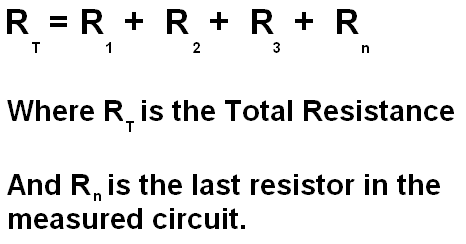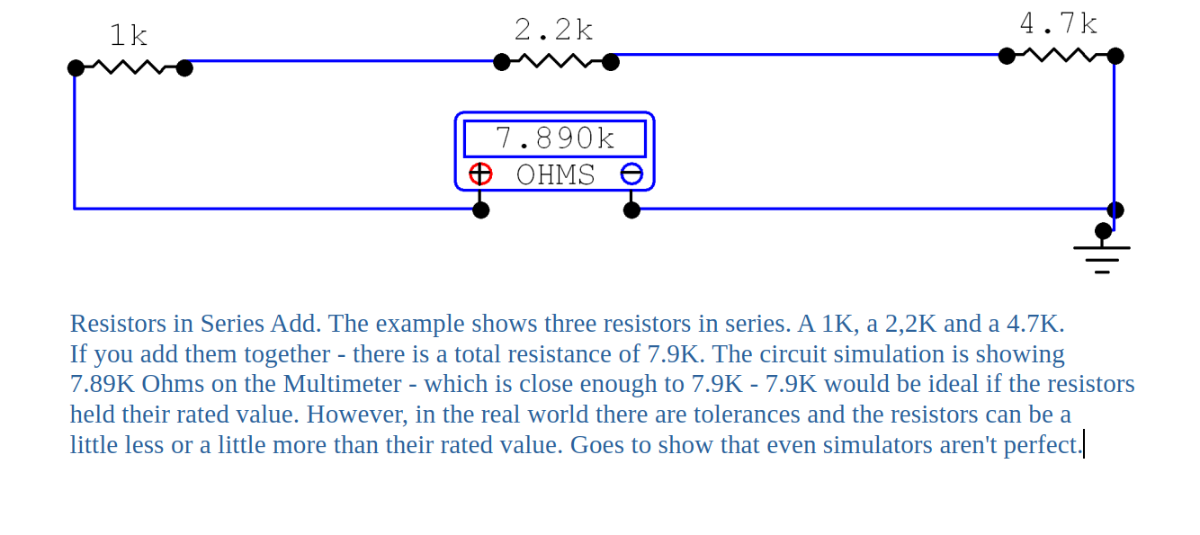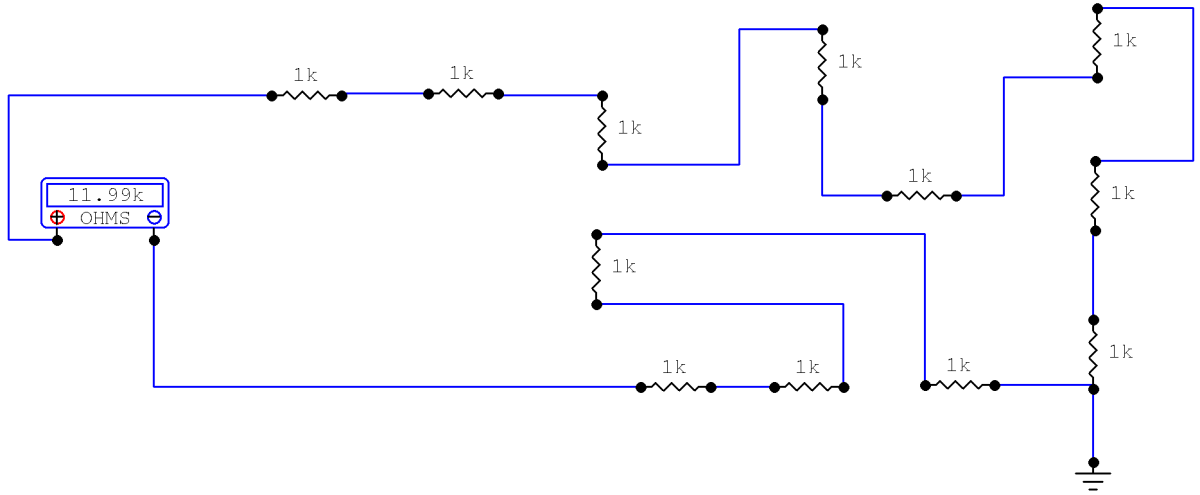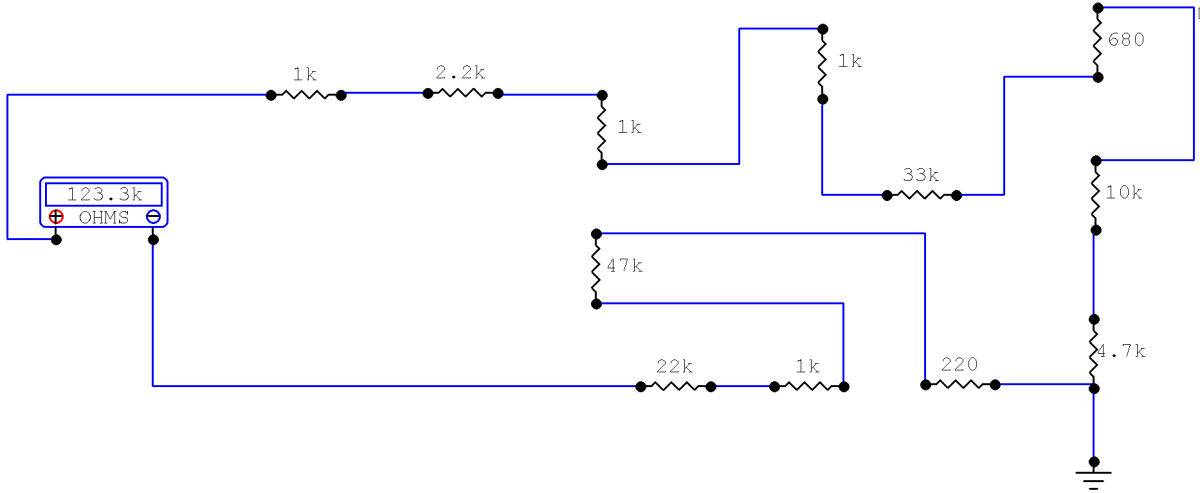Resistors In Series
The total resistance of resistors in series - is cumulative. In other words - the values add. So, if you have a 1K and a 2.2K resistor in series -
the total resistance is 3.2K. A 4.7K, 10K, and 47K resistor in series would have a total value of 61.7K. You get the idea - they just add up. I suppose
I should mention that you measure resistance in a circuit with the power off. If it's a complex circuit with many other passive and active components
- the measurement could be off because you may get impedance that comes into play. (Impedance is a topic for another day). You may need to desolder
the ends of the resistors to get a true reading. The formula for resistors in series is shown below...

Resistors In Series Formula

Two more Examples of Resistors In Series
Both examples are wired the same. The only difference is the value of resistors in each example. The point of these examples is in how they are wired up. They are wired in such a way as to try to make it more difficult to see that they are actually in series. As long as there is only one path for current to flow - the resistors are in series. Example 2 has 12, 1K resistors in series - which gives a total resistance of 12K Ohms. Example 3 has a variety of different value resistors - when added together result in a total resistance of 123.8K Ohms. As you can see - the simulator shows a total resistance of 11.99K Ohms for Example 2 and a total resistance of 123.3K Ohms for Example 3. Both of which are well within the margin of error.

Example 2

